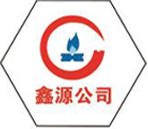
9 月 . 23, 2024 15:49
Back to list
reducing station
Reducing Stations An Overview
Reducing stations play a crucial role in various industrial and utility applications, primarily focusing on the management and control of pressure in gas and liquid systems. These facilities are designed to reduce the pressure of fluids or gases transported through pipelines, ensuring safe and efficient operation across diverse environments, from natural gas distribution to water supply networks.
At its core, a reducing station serves as a pressure regulator, adjusting high-pressure incoming flows to lower, more manageable levels. This is essential because most end-use applications, whether for residential heating, industrial manufacturing, or even chemical processing, require specific pressure levels for safe operation. A reducing station not only ensures that these levels are met but also enhances the safety of the entire delivery system.
The design of a reducing station often involves several key components, including pressure regulators, safety valves, and metering devices. The pressure regulator is the most critical component, as it automatically adjusts the pressure based on predetermined settings. Safety valves provide an additional layer of protection by releasing excess pressure that may accumulate unexpectedly. Many reducing stations also include metering systems to monitor flow rates and pressure levels, ensuring that any anomalies can be detected promptly.
reducing station

One of the significant advantages of reducing stations is their ability to improve energy efficiency
. By optimizing pressure levels throughout the pipeline network, they minimize energy loss, which can occur when gas or liquid is transported at higher pressures than necessary. This contributes not only to operational savings but also to environmental sustainability by reducing greenhouse gas emissions associated with energy production.Moreover, reducing stations can enhance system reliability. In cases where pressure fluctuations occur—such as sudden demand spikes or equipment malfunctions—reducing stations can quickly adjust to maintain steady flow rates. By preventing pressure drops or surges, these stations protect downstream equipment from damage and ensure consistent service delivery.
Additionally, reducing stations can incorporate advanced technology, such as remote monitoring and control systems. These innovations allow operators to oversee station performance in real-time, making it easier to identify issues before they escalate into significant problems. Predictive maintenance strategies can also be employed, utilizing data analytics to forecast potential failures and optimize operational efficiency.
In conclusion, reducing stations are integral to modern fluid and gas management systems. They ensure safe and efficient delivery while promoting energy savings and system reliability. As industries continue to evolve and demand more efficient solutions, the role of reducing stations will only grow in importance, paving the way for innovative designs and technologies that can further enhance their capabilities in the future.
Latest news
-
Unlocking The Quality Gas Pressure ReducersNewsNov.01,2024
-
The Role of Gas Pressure Reducing StationsNewsNov.01,2024
-
The Importance and Functionality of Safety Relief ValvesNewsNov.01,2024
-
The Essential Role of Safety Valves in Natural Gas ApplicationsNewsNov.01,2024
-
The Essential Role of Gas Pressure RegulatorsNewsNov.01,2024
-
Enhance Your Premium Gas FiltersNewsNov.01,2024

